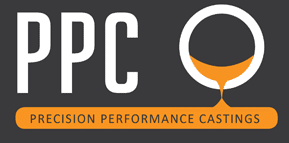If you rely on the development of cast parts overseas, understanding the entire journey from design to delivery is essential to ensure the success of your project. This blog will guide you through the key stages of the casting process and shed light on the critical aspects that contribute to delivering high-quality cast components and where you can save critical time to get your project delivered on time and in spec.
Picture this – you have your component designs, CAD files and drawings, and you have a deadline for your project with hefty late penalties if you don’t deliver on time. You’re ready to get the ball rolling, ASAP. You make some enquiries, but responses are slow and vague, people don’t answer the phone, communication can be challenging, and it’s weeks before you get a meeting to discuss the initial outline, only to be told flat out that the cost has doubled or that it’s going to take 20+ weeks to get remotely close to having the first usable prototype.
Sound familiar?
It doesn’t have to be like this! Technologies are changing and any foundry or casting provider worth their salt is keeping up with the latest and greatest advancements.
What if we told you that we can cut your component development time by 94%? Yes, you read that right. Development time for complex castings can sit at around 26 weeks or more, just to get to the stage where you can start to use the very first component; then add a few more weeks before it’s fully in production. But, we have been able to cut that development time down to just 2 to 3 weeks, and saving you time and money in the long run. How? The latest 3D printing technology, plus a team dedicated to ensuring your component is delivered in full, on time and in spec.
The 3D printing revolution
With advancements in technology, 3D printing is now capable of producing metal components in various grades, each tailored to specific applications and industries. From aerospace to mining, power generation to industrial machinery, 3D printing has proven its efficacy in manufacturing metal parts with exceptional precision and structural integrity. By utilising a range of metal powders, such as stainless steel, titanium, aluminium, nickel alloys, and cobalt-chrome, manufacturers can produce components with varying mechanical properties, corrosion resistance, and thermal characteristics. As a result, 3D printing in different metal grades has opened up new possibilities for creating customised, lightweight, and high-performance metal parts, propelling industries into a new era of manufacturing innovation.
3D printing is a fantastic way of developing parts in those higher metal grades. Tweaks and adjustments can be made quickly for each progression of the part’s development, quickly eliminating defects and getting you to a point where you can switch to traditional mould casting for high-volume production and reducing costs.
How much does this all cost?
Well, how long is a piece of string? Not what you wanted to hear, but in all seriousness, this can depend on the part, its complexities and the metal grade you are needing to use. One thing we can tell you is that our customers have seen their development time decrease significantly, getting them to the point of optimal cost and production much faster, and that is priceless.
The journey from design to delivery in the development of cast components involves a series of interconnected steps that demand precision, expertise, and attention to detail. As an individual managing the development of cast parts overseas, partnering with a skilled casting supplier who is an early adopter of state-of-the-art technology and who implements effective quality control measures will help you deliver superior products to your clients. By ensuring a seamless and efficient process, your projects can flourish, establishing a reputation for reliability and excellence in the industry.


